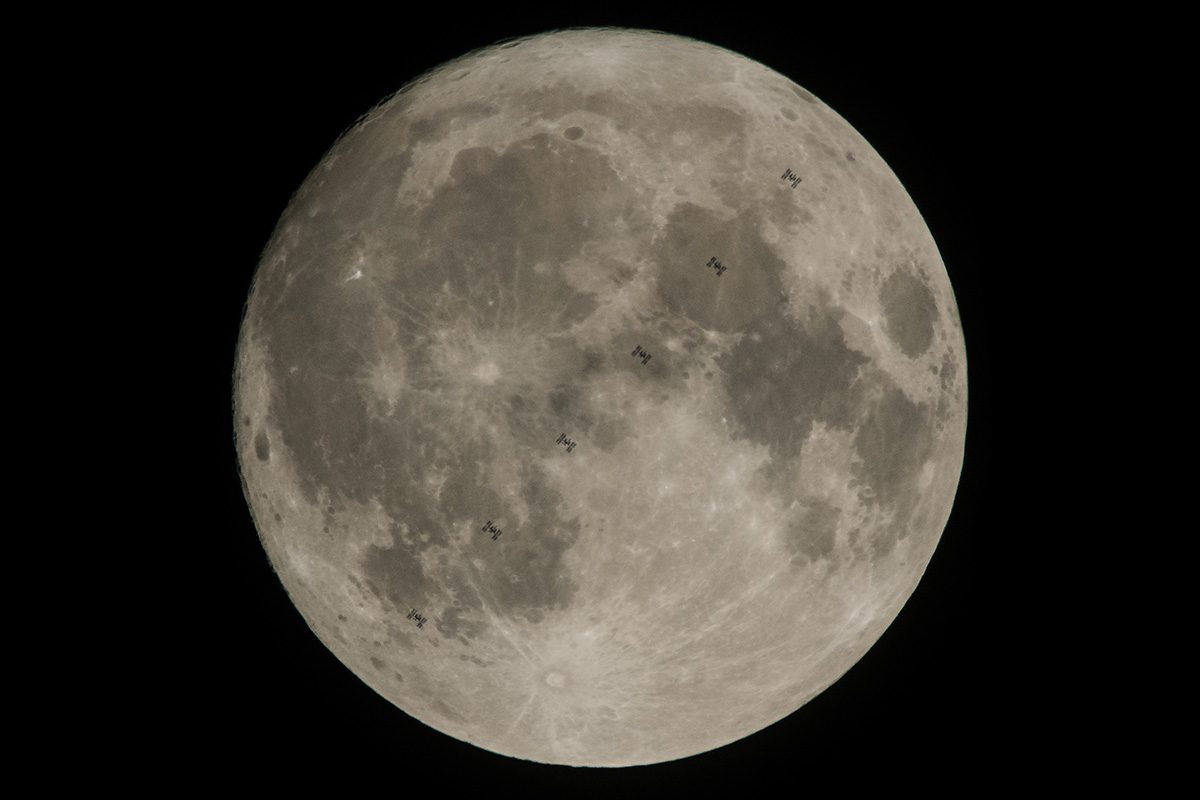
Tonight – can you see the Buck Moon and Space Station together? Find out if you’re in the right location | BBC Sky at Night Magazine
How did your country report this? Share your view in the comments.
Diverging Reports Breakdown
Tonight – can you see the Buck Moon and Space Station together? Find out if you’re in the right location
The 2025 Buck Moon rises in the southeast from 9–11 July, poking its head above the horizon around 10pm. It will be a low, horizon-grazing full Moon, and also the furthest Moon from the Sun of the year. If you get your timing right, and you happen to be in a favourable location, you might be able to spot the International Space Station in the sky on the same night. The ISS is visible without the need for binoculars or a telescope, if you know when and where to look. The Space Station’s orbit means it passes over about 90% of the world’s population, so it’s likely flown above your head multiple times without you even knowing. It circles Earth every 90 minutes, giving astronauts on board 16 sunrises and sunsets every day, and giving us down on the ground the chance to see a bright overhead pass. Around the summer solstice period, the ISS can be seen up to four times a night, depending on your location.
Between 9–11 July, the 2025 Buck Moon rises in the southeast, poking its head above the horizon around 10pm.
It’s located in the constellation Sagittarius, which never rises very high in the sky for those of us in the Northern Hemisphere.
That means the Buck Moon will be a low, horizon-grazing full Moon, and also, incidentally, the furthest Moon from the Sun of the year.
If you get your timing right, and you happen to be in a favourable location, you might be able to spot the International Space Station in the sky on the same night that the Buck Moon rises.
Can you see the Buck Moon and the Space Station on the same night? This fish-eye lens image shows the International Space Station passing overhead, 5 October 2017, with the full Moon rising in the east, left of the image. Photo by Alan Dyer/VW Pics/UIG via Getty Images
Seeing the International Space Station
Did you know it’s possible to see the International Space Station with the naked eye?
The ISS is certainly visible without the need for binoculars or a telescope, if you know when and where to look.
In fact, the Space Station’s orbit means it passes over about 90% of the world’s population, so it’s likely flown above your head multiple times without you even knowing.
It circles Earth every 90 minutes, giving astronauts on board 16 sunrises and sunsets every day, and giving us down on the ground the chance to see a bright overhead pass.
The July full Moon, known as the ‘Buck Moon’, doesn’t rise very high above the horizon. This image shows it above Split, Croatia on 3 July 2023. Photo: Zvonimir Barisin/PIXSELL/DeFodi Images via Getty Images
Space Station and the Buck Moon?
The Buck Moon rises this week, 9–11 July, and is visible in the southeast from about 10pm, drifting towards the south and then setting in the southwest in the early hours.
This full Moon in July won’t rise very much above the southern horizon, meaning you’ll need a clear, flat horizon to see it.
Get yourself a view unspoiled by tall buildings and trees etc.
The further south in the Northern Hemisphere you are, however, the easier it will be to see the Buck Moon rise.
Star trails and the trails of lights on Earth, as seen from the Space Station by NASA astronaut Don Pettit. Credit: NASA/Don Pettit
And if you do manage to see the Buck Moon, you may also see the International Space Station on the same night.
The International Space Station is visible from Earth because sunlight reflects off it and bounces back down to the ground.
This means that, in order to see the ISS, you need a good, dark sky.
International Space Station over Ribblehead Viaduct, by Pete Collins, Yorkshire Dales, UK.
And because we’re largely reliant on sunlight to give us a view of the ISS, it can normally only be seen just after sunset or just before sunrise.
This Buck Moon rises just after sunset, meaning you may be able to catch a glimpse of it and the Space Station in the same evening.
Each June and December, the Sun, the Earth and the orbit of the Space Station are aligned as such that the ISS doesn’t pass through Earth’s shadow, according to the European Space Agency.
This means that, around the summer solstice period, the ISS can be seen up to four times a night, depending on your location and the weather.
ISS passing near the Moon, captured by Nick Lucas, Dorset, UK
What’s more, according to Sky and Telescope, the Space Station can be seen multiple times a night around the 4th July holiday, including a week or so either side.
That could be good news for anyone wanting to try and catch a glimpse of the ISS and the Buck Moon in the same night.
You may even be lucky enough to see – or photograph – it passing in front of the Moon, in an event known as a ‘transit’.
You can input your data into the online Transit Finder and it will calculate when the next lunar transit of the Space Station will occur from your location.
ISS passing across the face of the Moon, captured by Andrei Dumitriu, Bucharest, Romania, 1 November 2020
Online resources for spotting the ISS
Here is a selection of websites that will help you calculate when the International Space Station is next making a pass over your location.
If you do manage to see or photograph the International Space Station, get in touch by emailing contactus@skyatnightmagazine.com
Source: https://www.skyatnightmagazine.com/news/buck-moon-international-space-station
